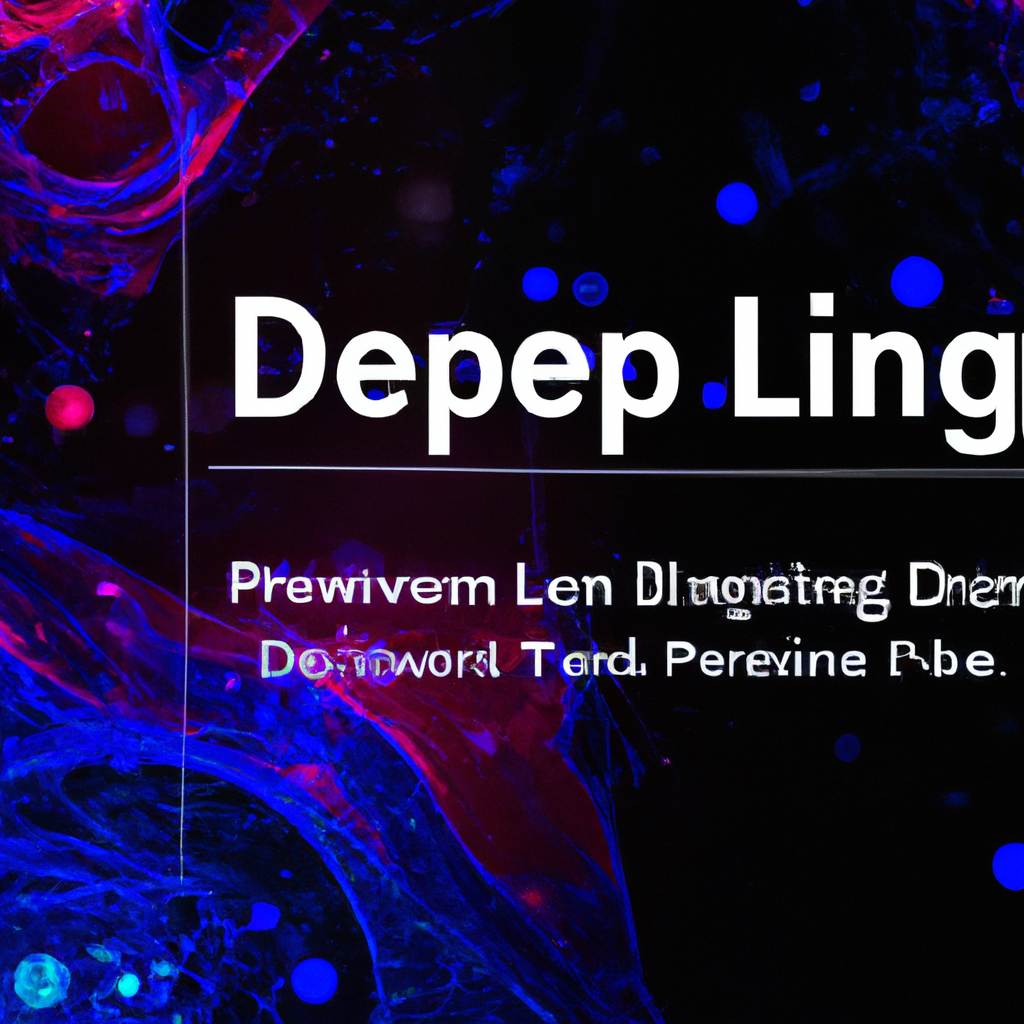Understanding the Principles of Deep Learning in Computer Vision
Table of Contents
Understanding the Principles of Deep Learning in Computer Vision
# Introduction
Computer vision, a field within artificial intelligence (AI), has seen remarkable advancements in recent years, thanks to the application of deep learning techniques. Deep learning, a subset of machine learning, has revolutionized the way computers perceive and understand visual data. In this article, we delve into the principles of deep learning in computer vision, exploring its underlying concepts and algorithms.
# The Neural Network Paradigm
At the heart of deep learning lies the neural network paradigm. Inspired by the structure and function of the human brain, neural networks consist of interconnected nodes, known as neurons, which collectively process and analyze data. Deep neural networks, or deep learning models, typically consist of multiple layers of neurons, allowing them to learn increasingly complex features and patterns from input data.
# Convolutional Neural Networks (CNNs)
Convolutional Neural Networks (CNNs) have emerged as the backbone of deep learning in computer vision. These networks are specifically designed to process grid-like data, such as images. CNNs utilize convolutional layers to extract meaningful features from the input images. These layers consist of filters, also known as kernels, which are convolved with the input image to produce feature maps. Through the use of non-linear activation functions, such as the Rectified Linear Unit (ReLU), CNNs are able to capture the non-linear relationships within the input data.
Pooling layers are often incorporated into CNN architectures to reduce the spatial dimensions of the feature maps, while preserving the most salient features. Max pooling, for example, selects the maximum value within a pooling window, effectively downsampling the feature maps. This downsampling operation helps to reduce the computational complexity of subsequent layers and improves the network’s ability to generalize.
# Training Deep Neural Networks
Training deep neural networks involves two key steps: forward propagation and backpropagation. During forward propagation, the input data is passed through the network, layer by layer, with each layer transforming the data and passing it to the next layer. The final layer produces the network’s output, which is compared to the ground truth labels to compute a loss function.
Backpropagation is then employed to update the network’s parameters, iteratively optimizing the network’s performance. This process involves calculating the gradients of the loss function with respect to each parameter in the network, and then using these gradients to update the parameters through gradient descent optimization algorithms, such as stochastic gradient descent (SGD) or Adam.
# Transfer Learning
Transfer learning has emerged as a powerful technique in deep learning for computer vision tasks. It leverages the knowledge learned from pre-trained models on large-scale datasets, such as ImageNet, and applies it to new, related tasks with smaller datasets. By initializing the network’s weights with pre-trained values, transfer learning allows models to benefit from the learned features and significantly reduces the training time and data requirements.
Fine-tuning is a common strategy used in transfer learning, where the pre-trained model is further trained on the new task-specific data. This allows the model to adapt its learned features to the new task, while still retaining the generic knowledge from the pre-training phase.
# Object Detection and Recognition
Object detection and recognition are fundamental tasks in computer vision. Deep learning has greatly advanced the state-of-the-art in these areas. One popular approach is the Region-based Convolutional Neural Network (R-CNN), which combines the power of CNNs with region proposal algorithms to accurately detect and classify objects within an image.
R-CNN generates region proposals using selective search or similar algorithms, which extract potential object regions from the image. These regions are then passed through a CNN, producing fixed-length feature vectors. A classifier, such as a Support Vector Machine (SVM), is trained on these features to classify the objects. This multi-stage process allows R-CNN to achieve impressive object detection and recognition performance.
# Generative Adversarial Networks (GANs)
Generative Adversarial Networks (GANs) have revolutionized the field of generative modeling in computer vision. GANs consist of two neural networks: a generator and a discriminator. The generator network learns to generate realistic images from random noise, while the discriminator network learns to distinguish between real and generated images.
During training, the generator and discriminator play a game, with the generator trying to produce images that fool the discriminator, and the discriminator trying to correctly classify the real and generated images. This adversarial training process drives both networks to improve their performance, resulting in the generator producing increasingly realistic images.
# Conclusion
Deep learning has significantly advanced the field of computer vision, enabling computers to perceive and understand visual data with unprecedented accuracy. Convolutional Neural Networks (CNNs) have emerged as the cornerstone of deep learning in computer vision, allowing for the extraction of meaningful features from images. Transfer learning has become a powerful technique, enabling the transfer of knowledge from pre-trained models to new tasks. Object detection and recognition have greatly benefited from deep learning, with approaches like R-CNN achieving impressive performance. Generative Adversarial Networks (GANs) have revolutionized generative modeling, enabling the realistic generation of images. As deep learning continues to evolve, we can expect further breakthroughs in computer vision, pushing the boundaries of what is possible in visual perception and understanding.
# Conclusion
That its folks! Thank you for following up until here, and if you have any question or just want to chat, send me a message on GitHub of this project or an email. Am I doing it right?
https://github.com/lbenicio.github.io

